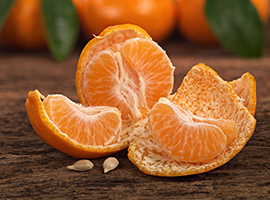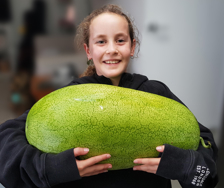Yates Account
Join now
Create a Yates account today!
Sign up to join the Yates Garden Club for monthly e-mails packed with seasonal inspiration, tips for success & exclusive promotions.
Plus if you’re a Garden Club member you can take part in the Yates Growing Community - a blog to share successes, get advice & win prizes in fun challenges along the way!

Forgot password
Enter the email address associated with your account, and we'll email you a new password.

Grow your own beautiful blueberries
If home grown, freshly picked blueberries sound tempting, then it’s time to find a spot at your place for a blueberry bush or two.
Growing Tips:
-
Blueberries generally prefer warm days and cool nights. Some varieties require higher levels of ‘chilling hours’, so choose a blueberry that’s suited to your climate.
-
Blueberries prefer an acidic, well-drained soil. In areas with alkaline soil (a pH higher than 7), applications of Yates Soil Acidifier Liquid Sulfur every month will help lower the soil pH.
-
Blueberries can also be grown very successfully in pots. Choose a good quality potting mix, such as Yates Premium Potting Mix, and a large 40 – 50 cm diameter pot to give them enough room to grow.
-
Blueberries will benefit from regular applications of a complete plant food during spring. Yates Thrive Strawberry Berry Fruit Liquid Plant Food is ideal for blueberries as it’s fortified with extra potassium to encourage lots of flowers and delicious berries.
Special Mandarins

As the main mandarin season draws to a close, one of the last varieties bearing fruit during early spring is ‘Richard special’ mandarins. They have large sweet juicy fruit that are easy to peel, as well as being packed with vitamin C goodness!
‘Richard special’ mandarin trees have lovely bright green foliage and grow to around 3 m tall. They prefer growing in warm spot (though will tolerate light frosts) and need a sunny location with well-drained soil. You can also try growing a ‘Richard special’ in a large container (a 500 mm pot is ideal) filled with good quality potting mix such
as Yates Premium Potting Mix.
Early spring is an ideal time to plant a new mandarin tree, along with all the other fantastic types of citrus.
When planting a new citrus tree into the ground, mix some Yates Thrive Natural Blood Bone with Seaweed into the bottom of the planting hole. Yates Thrive Natural Blood & Bone improves the quality of the soil and supplies the newly planted mandarin with gentle, organic nutrients as it establishes. It’s also boosted with root promoting New Zealand seaweed.
Growing Tips:
-
Keep the new tree well-watered, particularly during its first summer.
-
Applying a layer of mulch, such as bark chips, around the root zone will help keep the soil moist and protect the top soil and shallow root system.
-
Keep the mulch around 5 cm away from the trunk, so that the trunk itself doesn’t stay moist.
-
Mandarins, like other citrus, are heavy feeders and require lots of nutrients to support all the foliage, flowers and developing fruit. From spring until the mandarins are harvested, feed every 1 – 2 weeks with Yates Thrive Citrus Liquid Plant Food. Dilute 2 capfuls into 9 litres of water and apply around the root zone.
Home grown bananas

New Zealanders love their bananas and per capita are one of the world’s largest consumers. That is one popular fruit! It’s one of Mother Nature’s best pre-packaged lunch box fillers, great for muffins, cakes, smoothies and fruit salads, and they’re packed with vitamins and fibre. It’s time to grow your own!
Growing up to 4 m tall, banana plants are lush and leafy and can add a tropical feel to a home garden.
Here are some backyard banana growing tips:
-
Find a warm, frost free wind protected spot with well-drained soil that preferably receives at least 6 hours of sunshine a day. For cooler areas, look for varieties like Misi Luki.
-
Mulch well around the banana plants and it’s important to keep the soil consistently moist.
-
Banana plants are nutrient hungry. To help promote flowering and fruiting apply a rich source of potassium, like Yates Thrive Natural Sulfate of Potash with Seaweed, around the root zone during early spring and gently mix into the soil.
-
Mature banana plants will produce a long flower stalk along which hands of bananas will develop.
-
The entire fruiting stem of bananas can be covered with a large open-ended bag once the fruit moves from being downward to upward facing. The bag will help deter birds
from eating the fruit. -
You can harvest individual hands of bananas before they’re ripe and ripen them indoors. This will help to spread out the harvest season.
-
Once a banana plant has fruited it will die, however there should be multiple suckers to take its place. Remove all but 2 or 3 of the strongest suckers
-
To help keep the plant looking tidy, cut off any dead or damaged foliage.
















Share
Share this article on social media